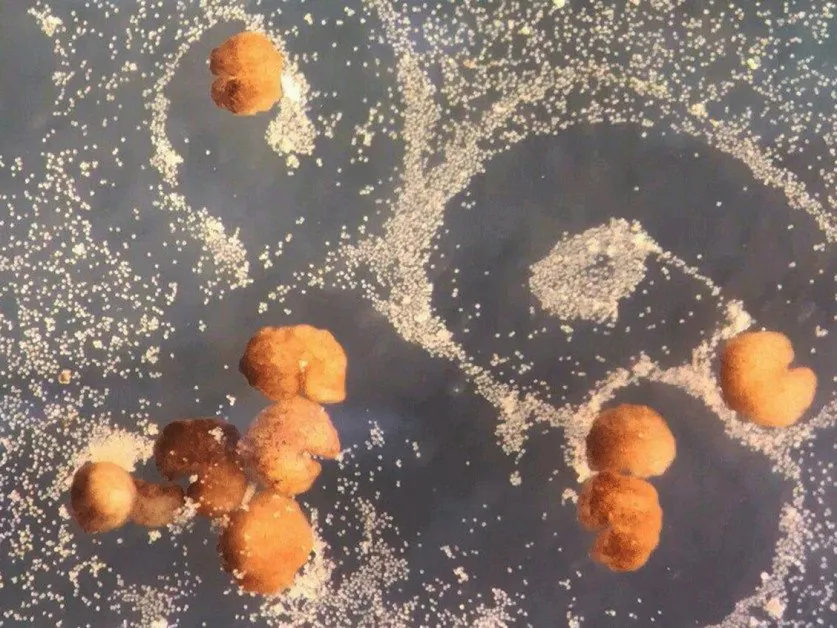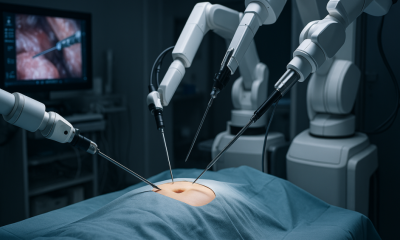Robotics
Scientists Create First-Ever Self-Replicating, Living Robots

Scientists at the University of Vermont, Tufts University, and the Wyss Institute for Biologically Inspired Engineering at Harvard University have created the first-ever, self-replicating living robots. The creation followed the discovery of a new form of biological reproduction.
The results of the research were published in the Proceedings of the National Academy of Sciences.
Living Xenobots
The team is the same that built the first living “Xenobots,” and they discovered that the computer-designed and hand-assembled organisms are able to swim out into their tiny dish to find single cells. They then gather hundreds of them together to assemble “baby” Xenobots that become regular Xenobots after just a few days.
The new Xenobots can then go out and build copies of themselves, repeating this process over and over.
Joshua Bongard, Ph.D., is a computer scientist and robotics expert at the University of Vermont. He co-led the research.
“With the right design – they will spontaneously self-replicate,” Bongard said.
The team drew inspiration from the Xenopus laevis frog, in which embryonic cells would develop into the skin.
Michael Levin, Ph.D., is a professor of biology and director of the Allen Discovery Center at Tufts University and co-leader of the new research. He is also an Associate Faculty member at the Wyss Institute.
“They would be sitting on the outside of a tadpole, keeping out pathogens and redistributing mucus,” Levin said. “But we’re putting them into a novel context. We’re giving them a chance to reimagine their multicellularity.”
Douglas Blackiston, Ph.D., is co-author of the research and senior scientist at Tufts University and the Wyss Institute. He was responsible for assembling the Xenobot “parents” and developing the biological portion of the study.
“People have thought for quite a long time that we've worked out all the ways that life can reproduce or replicate. But this is something that's never been observed before,” Blackiston said.
“This is profound,” Levin continued. “These cells have the genome of a frog, but, freed from becoming tadpoles, they use their collective intelligence, a plasticity, to do something astounding.”
Spontaneous Replication
Earlier experiments demonstrated how Xenobots could be designed to achieve simple tasks, but the new ones show how the biological objects can spontaneously replicate.
“We have the full, unaltered frog genome, but it gives no hint that these cells can work together on this new task,” Levin said.
Sam Kriegman, Ph.D., is the lead author of the study.
“These are frog cells replicating in a way that is very different from how frogs do it. No animal or plant known to science replicates in this way,” Kriegman said.
Oee of the biggest breakthroughs in this research was the demonstration of kinematic replication, which has never been observed at the scale of whole cells or organisms.
Since this is completely new territory within the field of robotics, the team is responding to the risk associated with such technology.
“We are working to understand this property: replication. The world and technologies are rapidly changing. It's important, for society as a whole, that we study and understand how this works,” Bongard said. ” (the robots) are not what keep me awake at night. What presents risk is the next pandemic; accelerating ecosystem damage from pollution; intensifying threats from climate change. This is an ideal system in which to study self-replicating systems. We have a moral imperative to understand the conditions under which we can control it, direct it, douse it, exaggerate it.”
The living robots are entirely kept in a lab, can be extinguished easily, and are vetted by federal, state, and institutional ethics experts.
The team sees many potential applications for such technology, including regenerative medicine.
“If we knew how to tell collections of cells to do what we wanted them to do, ultimately, that's regenerative medicine — that's the solution to traumatic injury, birth defects, cancer, and aging,” Levin said. “All of these different problems are here because we don't know how to predict and control what groups of cells are going to build. Xenobots are a new platform for teaching us.”











